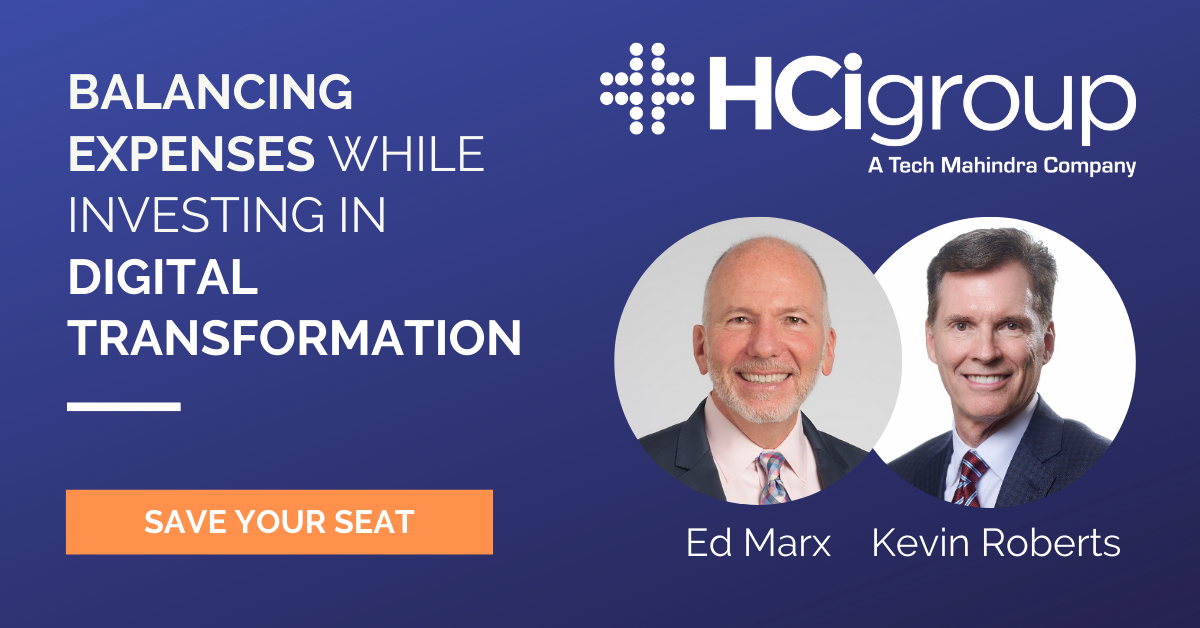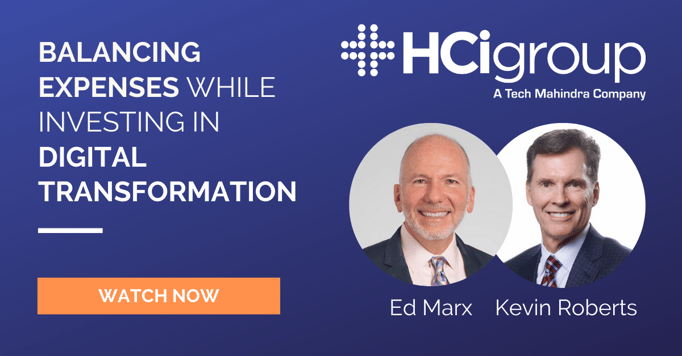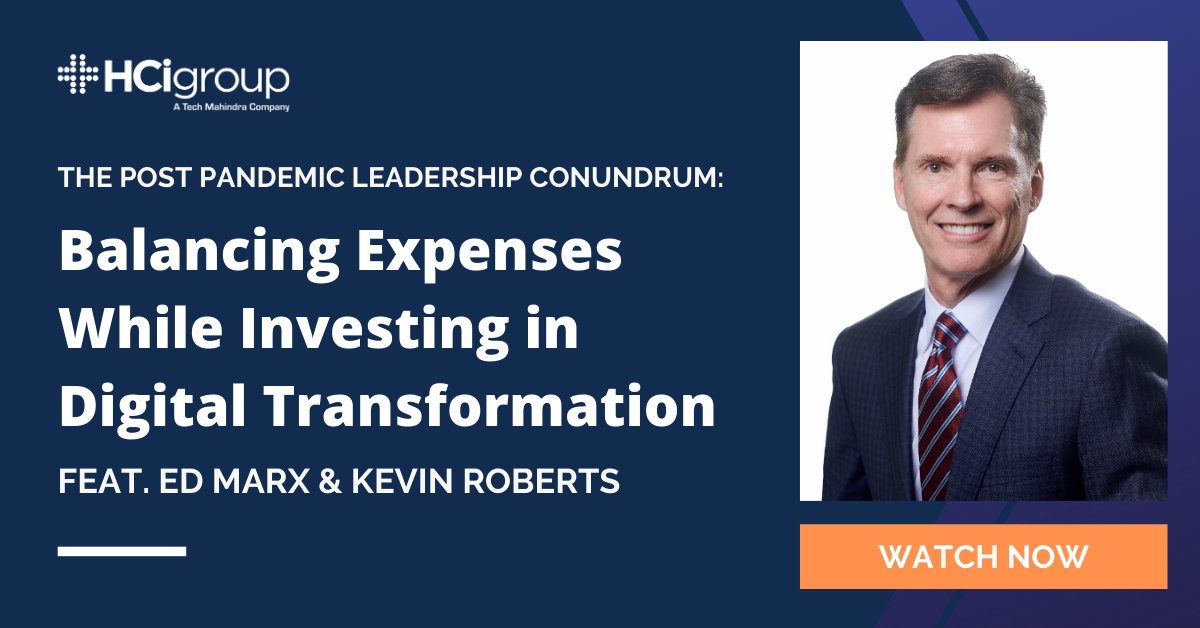The Post-Pandemic Leadership Conundrum: Balancing Expenses While Investing in Digital Transformation


The HCI Group was pleased to welcome Kevin Roberts, Executive Vice President and Chief Financial Officer of Geisinger. He has extensive experience in business development, corporate finance, health plans, mergers and acquisitions, financial operations, technology, and investment management for large healthcare organizations. Kevin joined Ed Marx, HCI’s and Tech Mahindra Health and Life Sciences Chief Digital Officer and former Cleveland Clinic CIO to take part in HCI’s live interactive webinar, Leadership Conundrum: Balancing Expenses While Investing in Digital Transformation. During the 30-minute session, Kevin provided valuable insight to help CIOs and CFOs better position their organizations post COVID 19. Particularly, Kevin discussed the major issue that large health systems will face in a post-pandemic world.
The CFO Role in the Wake of Digital Transformation
Kevin gained his first insight into the power of IT working as a computer audit specialist for KPMG right out of undergrad. From this perspective, he developed a process-oriented view of digital transformation. Particularly, his focus has been leveraging technology to make work more efficient for employees, but also finding efficiencies within the patient experience as well.
“I think of digital not so much in the context of the big application or technology platforms, but how do we exploit those. For example, a year ago at Geisinger we presented a digital strategy. In many respects, we already had all the transactional tools in place, but our customer and overall user experience strategy changed because of the strategic work we did. Particularly, we were able to transform our patient and member experience around our health plan.”
While the pandemic has taken its toll financially across the globe, Kevin sees this as a critical time to continue to invest in strategic transformation goals.
“In terms of the financial impact from the pandemic, we estimate that for this year, there will be half a billion dollars of impact before any federal aid…If we look at our critical enterprise that number was probably more like $650 or $700 million dollars of impact. In the face of this pandemic, you may ask, “How do you make these types of investments [in digital transformation]?” I would submit, “How do you not make them?” These types of investments are the promise to our patients and providers to make our work much efficient and effective.”

Post-Pandemic Realities: Balancing Long-Term Transformation Goals with the Need to Reduce Costs
Kevin believes that there is a need to find middle ground between cost-cutting in the short term and making long term digital transformation investments. This requires organizational buy-in and an understanding that while health systems must continue to make investments in long-term strategic projects that will bear fruit over time, they also have to keep looking for ways to leverage current technology to create efficiencies in the consumer engagement model.
“This is the $100 million-billion-dollar question. The answer is about balance. You can’t give yourself over to the tyranny of the quarterly earnings report, but also recognize that transformation requires long-term investment, and therefore have to remain responsive to our investors and ensure that our financial performance is where it needs to be. The pandemic has provided us with the perfect opportunity to really strive to leverage the technology at our disposal to achieve efficiency and effectiveness in our work. Having worked in healthcare for so long, I feel our technology has been at best a B+ and the integration has not always been exceptional. We need to look to other industries where they are setting examples of highly efficient processes that highly consistent and repeatable. That is what we need to do to mitigate the costs that we’ve incurred during the pandemic.”
This need for innovation and transformation within the industry has only been heightened by the current health crisis. Health organization executives can no longer simply focus simply on the patient experience, but also must seek innovative and create ways to make sure that the provider business model remains sustainable.
“There are five key components to running a successful healthcare organization: Quality, Safety, Customer Experience, highly engaged, high performing workforce, and last, stable business model. Especially now, with COVID 19, its more important than ever to find creative ways to make the business model go—and one of those ways is for us to look outside the industry and look for models of efficiencies elsewhere.”
Want to watch the whole interview? Click here

